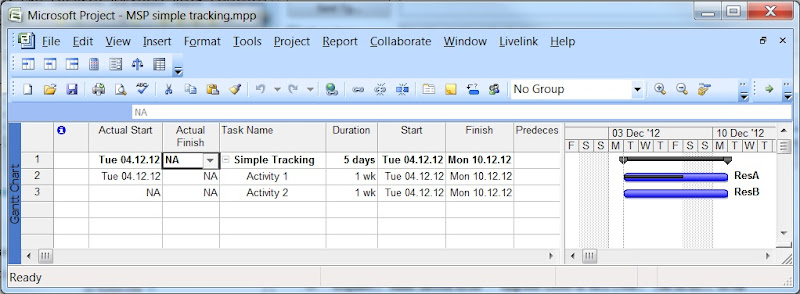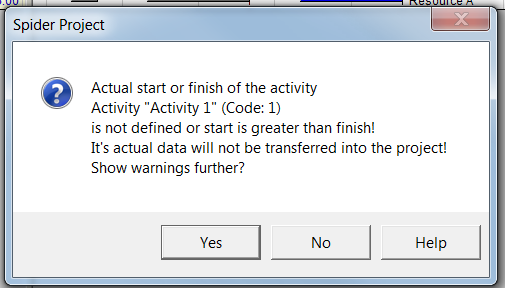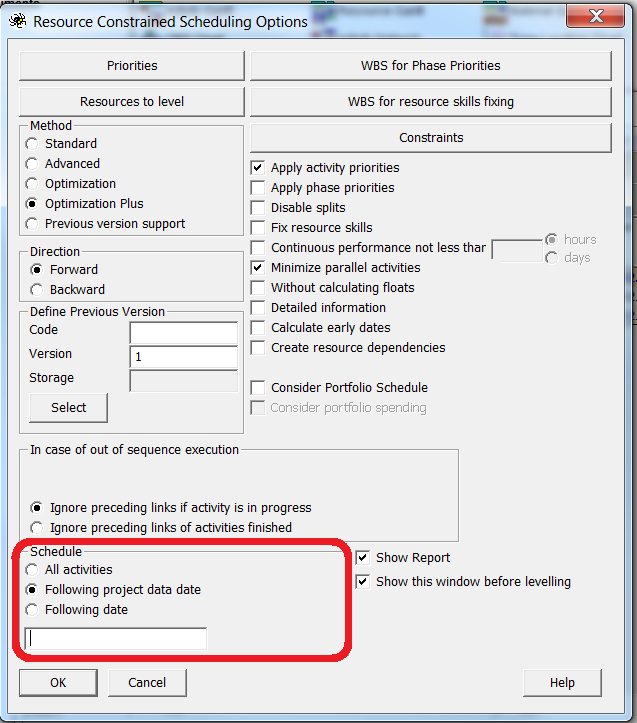I have the following question regarding tracking of progress in Spider:
I observe the following behavior:
Once I have updated progress on some of the activities (once I have entered an actual data for some of the activities), after that I will get an advice to reschedule project (which is logical).
However when rescheduling, Spider just looks at progress of all activities, finds the latest date among all activities for which the actual data is available (let us call it Date X), assumes, that if any other activity was not updated, that means it was not done, and them just reschedules all of the activities, which Spider considers as not being done to start after Date X.
Example:
Activity 1 and Activity 2 were scheduled to start on the same date,

Activity 1 only progress has been updated.

Reschedule. Result: Activity 2has been delayed

I understand the logic, but the difficulty I have with it (and may be because I am coming from MS Project) is that it requires, that at certain moment I would update ALL of the activities of my project until the same date. I am not sure it is practically possible. Sometime you just can’t contact people to get progress from them.
I my practice I go to activities for which I know the progress, I update these activities, and for the rest of the activities, for which progress information is just not jet available I ASSUME, that they are on progress and later, when actual progress is available will update those. MS Project does not have any problems with this:

However MSP allows me to reschedule uncompleted work to start after certain date. And this date can be any date. This date can be even earlier, then the last actual date (see example below). This I found is also not possible in Spider. In addition to this I have a flexibility of doing it for entire project or just for selected tasks.

I feel like spider imposes quite a strict rules on me, which I am not sure are always practically to achieve. Or am I missing something?

























Replies